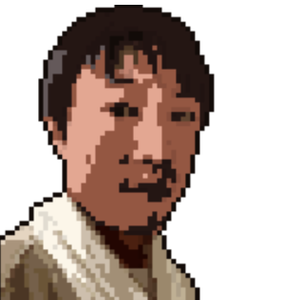Section B
Directions: In this section, you are going to read a passage with ten statements attached to it. Each statement contains information given in one of the paragraphs. Identify the paragraph from which the information is derived. You may choose a paragraph more than once. Each paragraph is marked with a letter. Answer the questions by marking the corresponding letter on Answer Sheet 2.
Poverty is a story about us, not them
A) Too often still, we think we know what poverty looks like. It's the way we've been taught, the images we've been force-fed for decades. The chronically homeless. The undocumented immigrant. The urban poor, usually personified as a woman of color, the “welfare queen” politicians still too often reference.
B) But as income inequality rises to record levels in the United States, even in the midst of a record economic expansion, those familiar images are outdated, hurtful, and counterproductive to focusing attention on solutions and building ladders of opportunity.
C) Today's faces of income inequality and lack of opportunity look like all of us. It's Anna Landre, a disabled Georgetown University student fighting to keep health benefits that allow her the freedom to live her life. It's Tiffanie Standard, a counselor for young women of color in Philadelphia who want to be tech entrepreneurs—but who must work multiple jobs to stay afloat. It's Ken Outlaw, a welder in rural North Carolina whose dream of going back to school at a local community college was dashed by Hurricane Florence—just one of the extreme weather events that have tipped the balance for struggling Americans across the nation.
D) If these are the central characters of our story about poverty, what layers of perceptions, myths, and realities must we unearth to find meaningful solutions and support? In pursuit of revealing this complicated reality, Mothering Justice, led by women of color, went last year to the state capital in Lansing, Michigan, to lobby on issues that affect working mothers. One of the Mothering Justice organizers went to the office of a state representative to talk about the lack of affordable childcare—the vestiges (痕迹) of a system that expected mothers to stay home with their children while their husbands worked. A legislative staffer dismissed the activist's concerns, telling her “my husband took care of that—I stayed home.”
E) That comment, says Mothering Justice director Danielle Atkinson, “was meant to shame” and relied on the familiar notion that a woman of color concerned about income inequality and programs that promote mobility must by definition be a single mom, probably with multiple kids. In this case, the Mothering Justice activist happened to be married. And in most cases in the America of 2019, the images that come to mind when we hear the words poverty or income inequality fail miserably in reflecting a complicated reality: poverty touches virtually all of us. The face of income inequality, for all but a very few of us, is the one we each see in the mirror.
F) How many of us are poor in the U.S.? It depends on who you ask. According to the Census Bureau, 38 million people in the U.S. are living below the official poverty thresholds. Taking into account economic need beyond that absolute measure, the Institute for Policy Studies found that 140 million people are poor or low-income. That's almost half the U.S. population.
G) Whatever the measure, within that massive group, poverty is extremely diverse. We know that some people are more affected than others, like children, the elderly, people with disabilities, and people of color.
H) But the fact that 4 in 10 Americans can't come up with $400 in an emergency is a commonly cited statistic for good reason: economic instability stretches across race, gender, and geography. It even reaches into the middle classes, as real wages have stagnated (不增长) for all but the very wealthy and temporary spells of financial instability are not uncommon.
I) Negative images remain of who is living in poverty as well as what is needed to move out of it. The big American myth is that you can pull yourself up by your own efforts and change a bad situation into a good one. The reality is that finding opportunity without help from families, friends, schools, and community is virtually impossible. And the playing field is nothing close to level.
J) The FrameWorks Institute, a research group that focuses on public framing of issues, has studied what sustains stereotypes and narratives of poverty in the United Kingdom. “People view economic success and wellbeing in life as a product of choice, willpower, and drive,” says Nat Kendall-Taylor, CEO of FrameWorks. “When we see people who are struggling,” he says, those assumptions “lead us to the perception that people in poverty are lazy, they don't care, and they haven't made the right decisions.”
K) Does this sound familiar? Similar ideas surround poverty in the U.S. And these assumptions give a false picture of reality. “When people enter into that pattern of thinking,” says Kendall-Taylor, “it's cognitively comfortable to make sense of issues of poverty in that way. It creates a kind of cognitive blindness—all of the factors external to a person's drive and choices that they've made become invisible and fade from view.”
L) Those external factors include the difficulties accompanying low-wage work or structural discrimination based on race, gender, or ability. Assumptions get worse when people who are poor use government benefits to help them survive. There is a great tension between “the poor” and those who are receiving what has become a dirty word: “welfare.”
M) According to the General Social Survey, 71 percent of respondents believe the country is spending too little on “assistance to the poor.” On the other hand, 22 percent think we are spending too little on “welfare”: 37 percent believe we are spending too much.
N) “Poverty has been interchangeable with people of color—specifically black women and black mothers,” says Atkinson of Mothering Justice. It's true that black mothers are more affected by poverty than many other groups, yet they are disproportionately the face of poverty. For example, Americans routinely overestimate the share of black recipients of public assistance programs.
O) In reality, most people will experience some form of financial hardship at some point in their lives. Indeed, people tend to dip in and out of poverty, perhaps due to unexpected obstacles like losing a job, or when hours of a low-wage job fluctuate.
P) Something each of us can do is to treat each other with the dignity and sympathy that is deserved and to understand deeply that the issue of poverty touches all of us.
贫困是关于我们的故事,而非另有其人
A) 很多时候,我们还是会认为自己了解贫困是什么样子。贫困是我们被告知的样子,贫困是我们几十年来一直被灌输的那些画面。长期无家可归的人。无证件的移民。城市里的贫民,通常化身为一位有色人种女性,是政治家们仍然经常会提到的“福利女王”。
B) 但随着收入不平等在美国上升到创纪录的水平(即便是在创纪录的经济扩张期间),那些熟悉的画面现在看起来是过时的、伤自尊的,而且与关注解决方案和搭建机会的阶梯背道而驰。
C) 44 现如今,我们所有人都面临着收入不平等和机会匮乏的问题。安娜·兰德勒,乔治城大学的一名残疾学生,一直在为领取医保福利而努力,有了医保福利她才能自由生活。蒂法妮·斯坦达德,是费城那些想成为科技企业家的有色年轻女性的顾问——但她必须打好几份工才能维持生计。肯·奥特洛,是北卡罗莱纳州乡村的一名焊工,他重返当地社区大学上学的梦想被佛罗伦萨飓风摧毁了——这仅仅是极端天气事件之一,还有很多极端天气事件打破了各地苦苦挣扎的美国人的生活的平衡。
D) 如果这些是贫困故事的核心人物,那么我们必须挖掘出哪些层次的观念、神话和现实,才能找到有意义的解决方案和帮助?为了揭示这一复杂的现实,由有色人种妇女领导的“母爱正义”组织去年前往密歇根州首府兰辛,就影响职业母亲的问题进行游说。 40 “母爱正义”的组织者之一来到一位州代表的办公室,谈到缺乏负担得起的托管服务——这是“期望母亲在家带孩子,她们的丈夫在外面工作”这种体制的残余。一名立法人员对这位积极分子的担忧不屑一顾,告诉她:“当时是我丈夫搞定了这件事——我全职在家。”
E) 36 “母爱正义”的董事丹妮尔·阿特金森说,这个评论“让人感到羞愧”,而且是基于一种熟悉的观念,即一位有色人种女性如果关心收入不平等和提高流动性的项目,她显然是一位单身母亲,很可能有多个孩子。在这一案例中,“母爱正义”的那位积极分子碰巧已婚。在2019年的美国,大多数情况下,当我们听到贫困或收入不平等这两个词时,不幸的是,我们脑海中浮现的画面并没有反映出一个复杂的现实:贫困几乎涉及我们所有人。除了极少数人之外,所有人都面临着收入不平等,这是我们每个人的真实写照。
F) 在美国,我们中有多少人很穷?这取决于你问谁。据美国人口统计局称,美国有3800万人生活在官方发布的贫困线以下。如果把超过这一绝对指标的经济需求考虑在内, 41 美国政策研究所发现有1.4亿人属于贫困或低收入人群。这几乎是美国人口的一半。
G) 无论采取何种措施,在这一庞大的群体中,贫困是极其多样化的。我们知道,有些人比其他人更容易受到影响,如儿童、老年人、残疾人和有色人种。
H) 但事实是,每10个美国人中就有4人在紧急情况下拿不出400美元。 37 这个统计数据经常被用来说明经济不稳定跨越了种族、性别和地域。这种现象甚至蔓延到了中产阶级,因为除了非常富有的人之外,所有人的实际工资都停滞不前,而短暂的经济不稳定时期并不少见。
I) 43 关于谁生活在贫困中以及需要什么才能摆脱贫困这种负面的画面仍然存在。美国人最大的神话是,你可以通过自己的努力让自己振作起来,把糟糕的局面变成一个好的局面。现实是,如果没有家人、朋友、学校和社区的帮助,你几乎不可能找到机会。而竞争环境也并不公平。
J) 框架研究所,一个专注于公共框架问题的研究小组,研究了是什么维持了英国对贫困的刻板印象和叙述。“人们把经济上的成功和生活中的幸福看作是选择、意志力和动力的产物,”框架公司首席执行官纳特·肯德尔-泰勒说。 39 “当我们看到那些在困境中挣扎的人,”他说,这些假设“导致我们认为,穷人是懒惰的,他们不在乎,他们没有做出正确的决定。”
K) 这听起来熟悉吗?关于美国的贫困问题也有类似的观念,而这些假设给出了对现实的虚假描述。“当人们进入这种思维模式时,”肯德尔-泰勒说,“用这种方式来理解贫困问题会让他们在认知上感到舒适。它造成了一种认知盲区——内在动力和个人选择之外的一切因素都变得无形,从人们的视野中消失了。”
L) 这些外在因素包括低薪工作带来的困难或基于种族、性别或能力的结构性歧视。 45 当穷人利用政府救济来帮助他们生存的时候,假设就会变得更糟。“穷人”和那些接受“福利救济”(现在已经成为令人反感的词)的人之间的关系很紧张。
M) 38 综合社会调查显示,71%的受访者认为国家在“扶贫”上花费太少。另一方面,22%的人认为我们在“福利救济”上花费太少。37%的人认为我们花费得太多了。
N) “母爱正义”的阿特金森说:“贫困和有色人种这两个词是可以互换的——特别是黑人妇女和黑人母亲。”的确,黑人母亲比其他许多群体更容易受到贫困的影响,然而,她们不成比例地被视为贫困的代表。例如, 42 美国人经常高估接受公共援助计划的黑人的比例。
O) 在现实中,大多数人在人生的某个阶段都会经历某种形式的经济困难。的确,人们往往会陷入贫困而又脱离贫困,这可能是由一些意想不到的障碍造成的,比如失业,或者是低薪工作的时间波动。
P) 我们每个人都能做的是以应有的尊严和同情对待彼此,要深刻认识到,贫困问题关系到我们每一个人。
- 36
- 单选题
- 分值:7.1
One legislative staffer assumed that a woman of color who advocated affordable childcare must be a single mother.
36.一位立法工作人员认为,一位有色人种女性如果提倡负担得起的托管服务,她一定是一位单身母亲。
- 37
- 单选题
- 分值:7.1
People from different races, genders, and regions all suffer from a lack of financial security.
37.来自不同种族、性别和地区的人都缺乏经济保障。
- 38
- 单选题
- 分值:7.1
According to a survey, while the majority believe too little assistance is given to the poor, more than a third believe too much is spent on welfare.
38.一项调查显示,虽然大多数人认为穷人得到的援助太少,但有超过三分之一的人认为国家在福利救济上花费太多。
- 39
- 单选题
- 分值:7.1
A research group has found that Americans who are struggling are thought to be lazy and to have made the wrong decisions.
39.一个研究小组发现,人们认为那些在困境中挣扎的美国人是懒惰的,他们做出了错误的决定。
- 40
- 单选题
- 分值:7.1
Under the old system in America, a mother was supposed to stay home and take care of her children.
40.在美国的旧体制下,母亲应该呆在家里照顾孩子。
- 41
- 单选题
- 分值:7.1
It was found that nearly 50% of Americans are poor or receive low pay.
41.调查发现,近一半的美国人处于贫困状态或收入很低。
- 42
- 单选题
- 分值:7.1
Americans usually overestimate the number of blacks receiving welfare benefits.
42.美国人通常高估领取福利救济的黑人人数。
- 43
- 单选题
- 分值:7.1
It is impossible for Americans to lift themselves out of poverty entirely on their own.
43.美国人不可能完全依靠自己的力量摆脱贫困。
- 44
- 单选题
- 分值:7.1
Nowadays, it seems none of us can get away from income inequality.
44.如今,似乎没有人能摆脱收入不平等。
- 45
- 单选题
- 分值:7.1
Assumptions about poor people become even more negative when they live on welfare.
45.当穷人靠福利救济生活时,关于他们的假设就会变得更消极。
留言数:0



